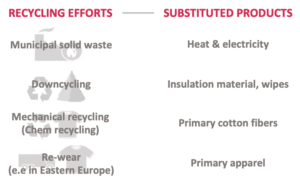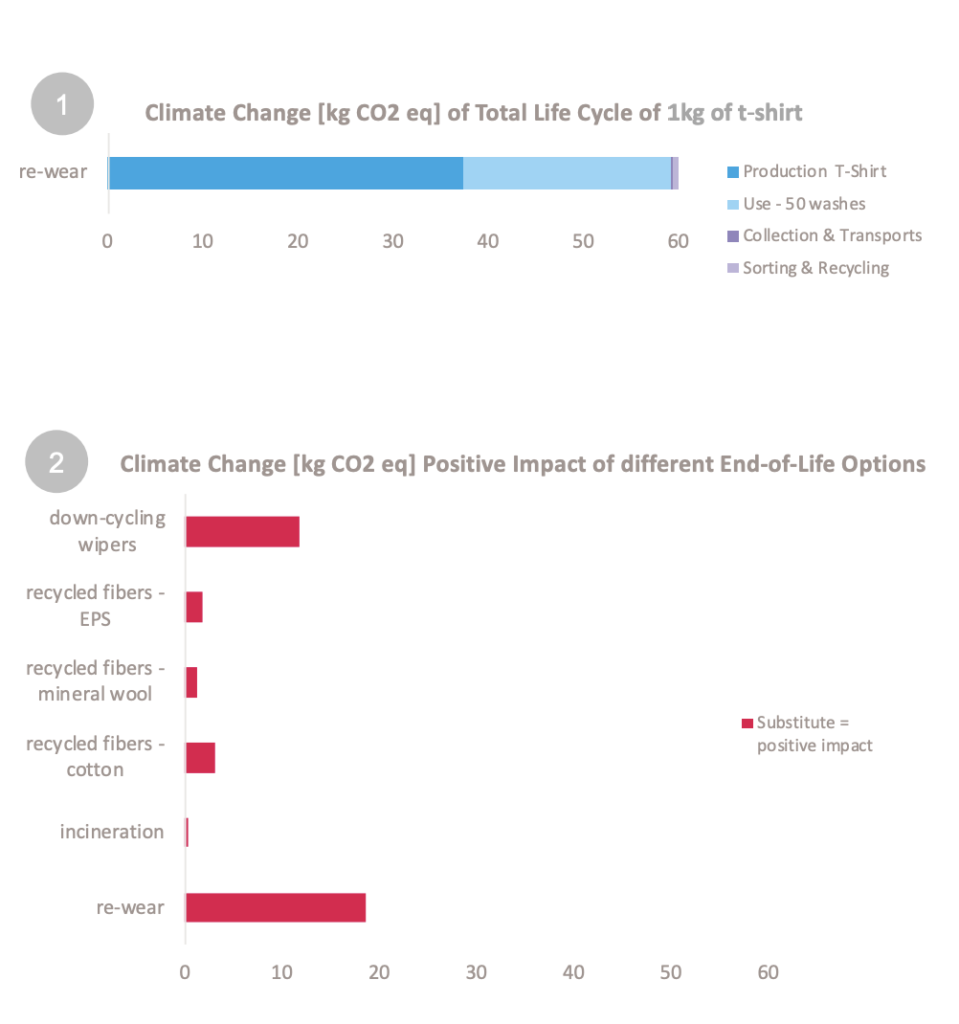Environmental Comparison of End-of-Life Options for Cotton T-Shirts

Objective
- Coop wants to understand the environmental impacts and benefits of different end-of-life options of a cotton t-shirt.
- The impacts should be compared to the overall lifecycle impact of producing a t-shirt.
- The ultimate goal is to identify efficient ways to close the loop in the apparel sector

Quantis Solution
Quantis used Swiss primary data from the project collaboration partners TEXAID, Soex and Telltex to compare four different end-oflife options for a t-shirt:

Results
- Compared to the overall impact of the lifecycle of a t-shirt, the production and use phases have the most significant environmental impact. The end-of-life impacts (see graph on the top, e.g. Collection & Transports and Sorting & Recycling for the re-wear option) are negligible.
- The biggest positive impact of the different endof-life options are re-wear (due to the decreased production of new products) followed by down-cycling to wipers or insulation
Key Findings
- The positive effects of substitution of materials depend on the environmental impact of the substituted virgin materials. End-of-life measures can replace high-quality products and resources.
- Incineration and composting of cotton t-shirts are the end-of-life options with the heaviest environmental burden and should be avoided.
- Textiles transport and end-of-life processing, such as fiber recycling, wipers cutting and clothes cleaning have a low contribution to the entire lifecycle of the t-shirt (below 2% of CO2e emissions)
Client’s Actions
- Metrics-based proof points for selecting and justifying different end-of-life options
- Using results for client communications
Environmental Comparison of End-of-Life Options for Cotton T-Shirts

Latest case studies

Case Study
Societe Generale
Societe Generale partnered with Quantis to assess and manage nature impacts, enhance portfolio strategy, and drive sustainable client engagement.

Case Study
Reckitt
Reckitt, with Quantis and CO2 AI, used AI and data to pinpoint and reduce Scope 3 emissions, improving footprint accuracy.

Case Study
Coop Group
Coop Group, with Quantis, created science-based targets and roadmaps, aligning climate strategy across seven business units.
